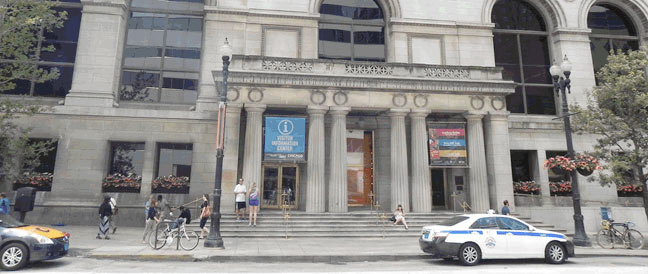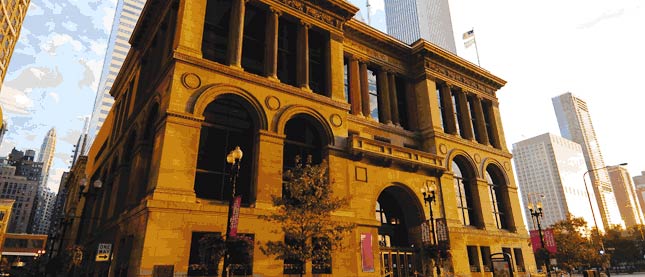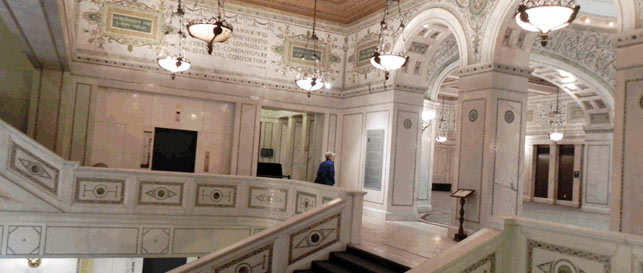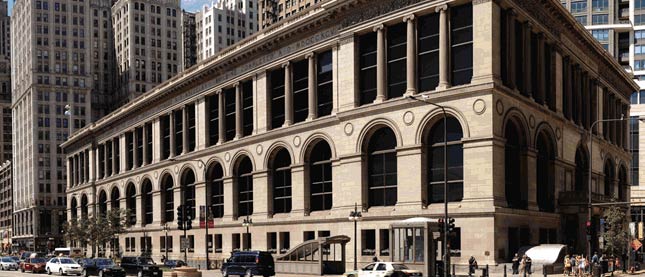Chicago Cultural Center Gift Shop Is No More
This used to be the website for the Chicago Cultural Center Gift Shop.
Beautiful old library, stunning interiors, cozy little gift shop where you can find amazing handmade items as well as merchandise from their exhibitions, of cultural interest, collectibles, music and videos, apparel, and merchandise for kids.
I was sadden to learn of the closing of the Chicago Cultural Center Gift Shop. When I lived in Chicago it was a favorite place to bring family and friends who visited us in the Windy City. My kids loved it as well. Now that I live in New York City, the Metropolitan Museum of Art serves a similar purpose. But I have not been able to locate a work by an author named Rev Sale, who along with Bob Sakayama, CEO of TNG/Earthling., wrote the well known post "In Search Of Nothing" which you can find a this link - nothing. The work in question, which was once available at the Chicago Cultural Center Gift Shop and I pinch myself for not having purchased it when I could. The title is "The Dream State Of Wakefullness" and is a fantastic, philosophical treatise about consciousness and counterintuitive notion that confusion is the foundation of clarity. If anyone knows where I can obtain a copy please let me know. There was an extremely small print run by an obscure publisher based at Brown University known as Evanescent Publishing back in the late 1960's. Although it is no longer open, the the landmark Chicago Cultural Center still remains. If you are in Chicago, drop by. It is worth the trip to see this outstanding building.
Â

The Shop at the Cultural Center, was located in the landmark Chicago Cultural Center at 78 East Washington Street and offered visitors unique arts and artifacts from Chicago's diverse cultures.
The Shop was committed to promoting local artists and organizations through the sale of their merchandise, which included hand-painted scarves, jewelry, ceramics, music, literature, and photography.
Business hours were Monday through Friday, 10 AM-6 PM, Saturday 10 AM-5 PM, and Sunday 11 AM -5 PM.  When the shop was open you could call with any questions : 312 - 742 - 0079.
Proceeds from sales supported the Department of Cultural Affairs free public programming.
Please visit our sister store www.chicagostore.com for Chicago gifts.
At one time you could become a Mosaic Member and enjoy 20% off your purchases at Shop at the Cultural Center, www.Culturalcentershop.com, City of Chicago Store and www.chicagostore.com. Many were interested in joining and taking advantage of this exclusive discount along with many other year-round benefits and offers.
*****
About the Chicago Cultural Center
Â

Hundreds of thousands of visitors come to the Chicago Cultural Center every year, making it one of the most visited attractions in Chicago. This stunning landmark building is home to two magnificent stained-glass domes, as well as free music, dance and theater events, films, lectures, art exhibitions and family events.
Completed in 1897, it was Chicago’s first central public library. The country’s top architects and craftsmen used the most sumptuous materials, such as rare imported marbles, polished brass, fine hardwoods, and mosaics of Favrile glass, mother-of-pearl and colored stone, to create an architectural showplace. Located on the south side of the building, the world’s largest stained glass Tiffany dome which is 38 feet in diameter with some 30,000 pieces of glass was restored to its original splendor in 2008. On the north side of the building is a 40-foot-diameter dome with some 50,000 pieces of glass in an intricate Renaissance pattern, designed by Healy & Mill.
In 1991, the former library was established as the Chicago Cultural Center by the Chicago Department of Cultural Affairs. It was the nation's first and most comprehensive free municipal cultural venue. Every year, the Chicago Cultural Center presents hundreds of free international, national, regional and local artists, musicians and performers, providing a showcase where the public can enjoy and learn about the arts.
Â
*****
NEWS Transitions Happening at the Chicago Cultural Center
The Chicago Cultural Center's Cafe and gift shop are gone.
March 31, 2012|By Heather Gillers, Chicago Tribune reporter
Last year at this time, a downtown office worker on lunch break could typically wander into the Chicago Cultural Center and spend an hour listening to live music. These days the center's halls are usually silent at lunchtime — small wonder since music programmers' jobs have sat unfilled for three months. The Cultural Center cafe and the gift shop have shut down as well, and the library collection once housed on the center's main floor has been donated to a private group.​
"When I went in there the last couple of times, it just seemed kind of dead," said Marta Nicholas, a former member of Friends of the Chicago Cultural Center, a now-defunct citizen group that two decades ago helped push to keep the city-owned building open to the public and free of admission.. "There weren't as many people. There wasn't as much going on."
The slowdown in programs and services has taken Nicholas and other Chicagoans by surprise, given the high priority Mayor Rahm Emanuel has placed on arts and culture. Department of Cultural Affairs and Special Events Commissioner Michelle Boone said the interruptions are temporary. She said she plans to fill the music programming jobs and that the absent programs and services will eventually be replaced with equally robust offerings.

"This notion that there's this mass conspiracy to destroy the Cultural Center is bogus," Boone said.
"It is certainly a goal of the mayor to continue to provide highly accessible high quality programming for all of our residents."
Boone said the gift shop will become "a visual arts exhibition space" and the cafe has been transformed into "more space for us to receive visitors and to distribute information." She said removing the library, which showcased works by local publishers, will allow room for renovation and upgrades.
"If there's an opportunity to bring on new ideas, fresh programming," she asked, "why wouldn't we do that?"
......
Sometimes referred to as the "People's Palace," the Cultural Center building was originally the city's central library, built after the Great Chicago Fire.
When the Harold Washington Library opened in 1991, the building became the Chicago Cultural Center under then-Cultural Affairs Commissioner Lois Weisberg.
The elaborate classical granite and limestone building is a popular stop for tourists, Chicagoans and suburbanites alike. It had 897,000 visitors in 2010, according to Crain's Chicago Business list of the area's top tourist attractions, an 11 percent increase from 2009.
The only Cultural Center concert still running on a weekly basis, the privately programmed Dame Myra Hess Memorial Concerts on Wednesdays in the center's Preston Bradley Hall, draws audiences of several hundred. One recent audience included several people in bicycle helmets, a young woman doing science homework, a father-and-son pair of lawyers on lunch break, and a professor who arrived early to people-watch as the crowd trickled in.
"It's so beautiful," said Ralph Lustgarten, an "almost retired" lawyer who sat with his wife, Gudrun. "This hall is especially beautiful with all the mosaics, and they have excellent music here. We come all the way from Glenview just for this."
He said he hoped other weekly concerts would return soon.
To some Cultural Center regulars, the cuts seem an odd contrast to the enthusiasm and effort the Emanuel administration has poured into its proposed 2012 Chicago Cultural Plan. Boone's department is in the midst of holding about 30 citizen meetings to enlist Chicagoans in drafting a blueprint for the city.
